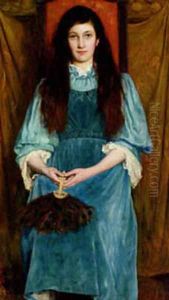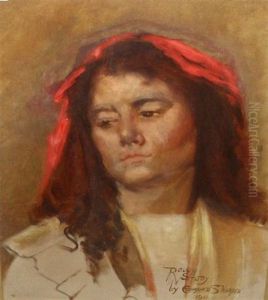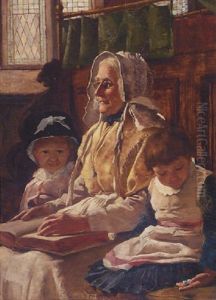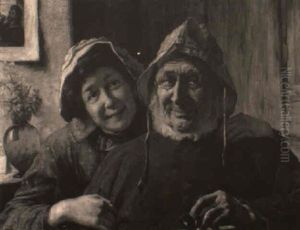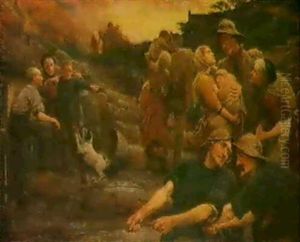Edward Samuel Harper Paintings
Edward Samuel Harper was a British artist known for his contributions to the Arts and Crafts movement. He was born in 1873 in Birmingham, England, into a period of great industrial growth and social change. Harper was part of a generation of artists who reacted against the industrial revolution's mass-production ethos, advocating for a return to handcraftsmanship, quality materials, and design integrity.
Harper's artistic journey began at the Birmingham School of Art, where he was influenced by the teachings of Edward R. Taylor and Arthur Gaskin. The Birmingham School was a center for the Arts and Crafts movement, and Harper would have been immersed in its philosophy, which emphasized the importance of craftsmanship and the beauty of natural forms.
Throughout his career, Harper worked primarily as an illustrator and designer. He contributed illustrations to various publications and produced designs for items such as bookplates, posters, and decorative panels. His style was often characterized by its elegance, attention to detail, and incorporation of nature-inspired motifs, which were common elements in Arts and Crafts designs.
Despite his talents, Harper did not gain the same level of fame as some of his contemporaries, such as William Morris or Walter Crane. However, his works were appreciated in his time for their contribution to the artistic and cultural ethos of the Arts and Crafts movement. He was part of a broader network of artists and craftspeople who sought to improve standards of design and preserve traditional skills.
Edward Samuel Harper's life spanned a time of significant change in the art world, including the transition from the Victorian era to the modern age. He passed away in 1943 during World War II, a time when the world was once again undergoing dramatic transformations. Harper's legacy is preserved in the collections of those who appreciate the Arts and Crafts movement and in the history of British decorative arts.
